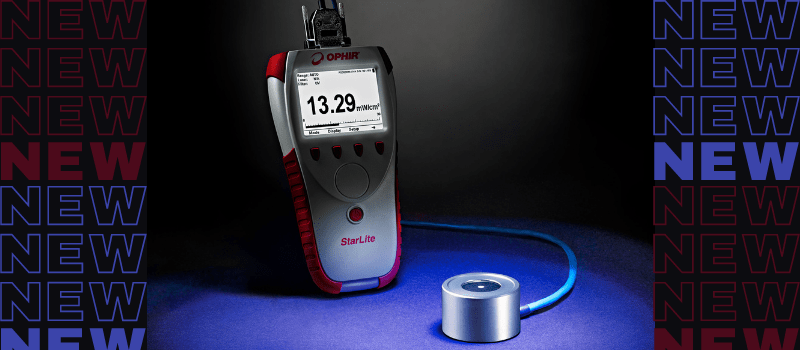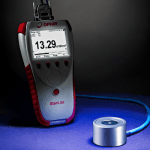There are many specifications used to define optical components, such as lenses, mirrors, windows, etc. Some, like focal length, might seem obvious. Others, like power and centration, might not be as self-explanatory.
Here is an incomplete glossary of some of the most commonly used specifications for optics.
Abbe Number (dimensionless)
An indication of the dispersion, or variation in refraction across wavelengths, in the optical material. The Abbe number is inversely proportional to dispersion, so lower numbers mean higher dispersion, and vice versa. Typical values range from 20 to 85.
Angle of Incidence (AOI) or Centration (degrees)
The angle between the optical axis and the axis perpendicular to the surface of the lens. This is usually close to zero for lenses or windows, while beam splitters often have a 45 degree angle of incidence.
Angle Tolerance or Prism Angle Accuracy (degrees)
Mainly used for components that are made with intentionally non-parallel surfaces (e.g., prisms, beam splitters), angle tolerance represents the degree of uncertainty of the angle between the surfaces. This is typically in the arcmin or arcsec range.
Aspect Ratio (dimensionless)
The ratio of the longest dimension of the optical component (diameter for circular optics, diagonal for rectangular optics) to its thickness.
Back focus (meters)
The distance between the back surface of the lens to its rear focal point. In other words, this is the point where collimated light passing from the front to the back of the lens would ideally focus at a point.
Bubble
A small pocket of air trapped inside the optical component. This is sometimes measured by the number of bubbles divided by the cross-sectional area.
Center Thickness Tolerance (meters)
A measure of the uncertainty of the lens or filter thickness, measured at the center of its diameter.
Clear Aperture (meters)
This is the functional diameter of the optical component, but not necessarily the full mechanical diameter of the piece. Only within this inner diameter are all other stated optical specifications guaranteed.
Diameter Tolerance (meters)
A measure of the uncertainty of the lens or filter diameter.
Dispersion
A measure of how much the refractive index changes with wavelength, in the given optical material. This is usually measured with the Abbe number (above).
f-number (dimensionless)
Ratio of the focal length to the diameter of the optical lens, or more accurately, the clear aperture.
Focal Length (meters)
The distance from the front surface of the lens to the point at which a collimated beam would become focused.
Inclusion
A more general term for a local imperfection in the material, which also includes bubbles and striae.
Internal Transmittance (dimensionless)
Ratio of transmitted light to the total incident light passed through the optical component at normal incidence.
Laser Damage Threshold (watts per meter squared)
The point at which an incident laser beam will damage the optical material, commonly expressed in watts per centimeter squared.
Magnification (dimensionless)
The ratio of object or image size to actual size, usually a function of the focal length and distance from the lens.
Parallelism / Wedge (degrees)
A measure of how parallel two surfaces of an optical lens or filter are to each other, measured in arcmin or arcsec. Non-parallel surfaces can cause optical aberrations.
Partial Dispersion (dimensionless)
The difference between refractive indexes at two particular wavelengths.
Pinholes
Small points at which there is no optical coating.
Power (inverse meters)
Degree to which a lens can focus light, equal to one divided by the focal length.
Principal Refractive Index (dimensionless)
The refractive index at a particular wavelength, usually in the middle of the spectrum used by that lens or window.
Radius of Curvature (meters)
The distance between the point at which the optical axis meets the lens (vertex) and the imaginary center of a circle that would be created by extending the curve of the lens (center of curvature). This radius can be positive or negative depending on which side of the vertex the center of curvature lies on. If the lens is plano, the radius is defined as zero.
Refractive Index (dimensionless)
The ratio of how fast light travels in a vacuum compared to its speed in the given medium. This number will be greater than one for any non-vacuum.
Stress Birefringence
Birefringence is the property of a material that causes it to have a different refractive index depending on the polarization and direction of incident light. In this case, the birefringence is caused by stress during the manufacturing of the optical component.
Surface Flatness (meters)
Measure of the deviation of a surface from perfect flatness. Usually measured in relation to the wavelength used.
Surface Quality (Scratch–Dig)
This is measured by the “scratch-dig” standard, which compares the test material to a standard material, using visual means only. However, it is meant to approximate size limits of the largest scratch widths and “dig” diameters (including bumps, bubbles, etc.) in the optics. Scratches are stated in microns, while digs are in tens of microns, therefore the common specification “60-40” states that all scratches should be under 60 μm wide, while digs must be under 400 μm in diameter.
Surface Finish (meters)
This is a measure of the smoothness (or roughness) of the polished optical component.
Surface Treatment and Coating
Some lenses or windows may be treated with antireflection coating.
Transmittance (dimensionless)
Ratio of light that exits a lens or optical component to the total incident light on that optical component at normal incidence.
Wavelength Range
The wavelengths of light that can be used with the given optical component while still performing to its other specifications.












Leave a Reply
Your email address will not be published. Required fields are marked *